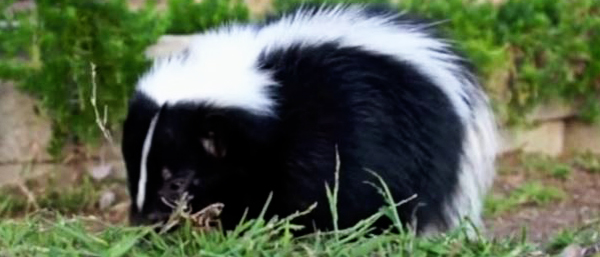- info@wildlifeanimalcontrol.com
Call us for help in your town
Wildlife Control Education
Where To Relocate a Trapped Skunk?
Trapping a skunk can be tricky business. Often times, experts will tell you that skunks are one of the most difficult animals to catch. But it’s possible and done all the time. Skunks are nocturnal animals and come out of their dens at night. They can travel as far as a mile each night, but usually they don’t ever go farther than four miles from their den. Therefore, in many areas around the country skunks can get into mischief and make a mess. Most likely they are scrounging around for food scraps that humans have left in their trash bins.

If you have a problem with skunks, you’ve probably thought about how to relocate these little, mischievous, black-and-white, stinkers. You’ll want to set out a live trap with a little bait. Sardines or canned tuna works best. Even though they’ll eat just about anything, the scent will attract them. Make a little trail toward the trap to entice them inside.
Once you successfully trap it, toss an old blanket over the top for protection and to help soothe the skunk. Now what do you do with the darn thing? Where can you relocate the skunk?
Before you do this, make sure you check with your local game commission for laws pertaining to the trapping and releasing of wild animal species. If you get the “green light” to relocate them, then you’re now making good progress. Make sure to keep the trap covered with your old blanket. You can now transport the skunk to a distant wooded area where there are no homes or young children out playing. Releasing them away from nearby houses will also help keep pets from coming home smelling like a skunk.
One thing to be aware of is the typical skunk’s gestation period. For striped skunks it’s around February, where spotted skunks are closer to April. These periods last for about 60 days. The reason you’ll want to know this is that baby skunks are dependent on their mothers and remain in their dens for about six weeks. The mother spends its time searching for their food. If you have an active period where skunks are on the prowl, it may become less of a problem after the babies move out of the den. Or, it may not!
With this knowledge, the best time for trapping and relocating a skunk may depend on what type of skunk it is. For a typical striped skunk, it’s best NOT to trap them between March and July. Essentially this prevents you from trapping the mother skunk while the baby skunks are left in their dens to fend for themselves. It’s possible the skunk is male and just poking around the neighbourhood, but unless you know for sure, you can follow these basic guidelines to ensure you aren’t hurting skunks in the relocation process.
Go back to the How to get rid of skunks home page.
Need skunk removal in your hometown? We service over 500 USA locations! Click here to hire us in your town and check prices - updated for year 2020.

















